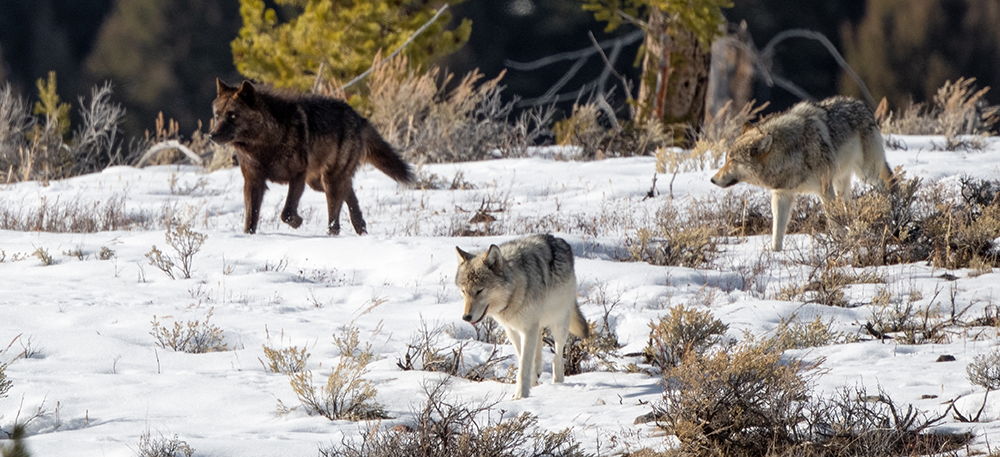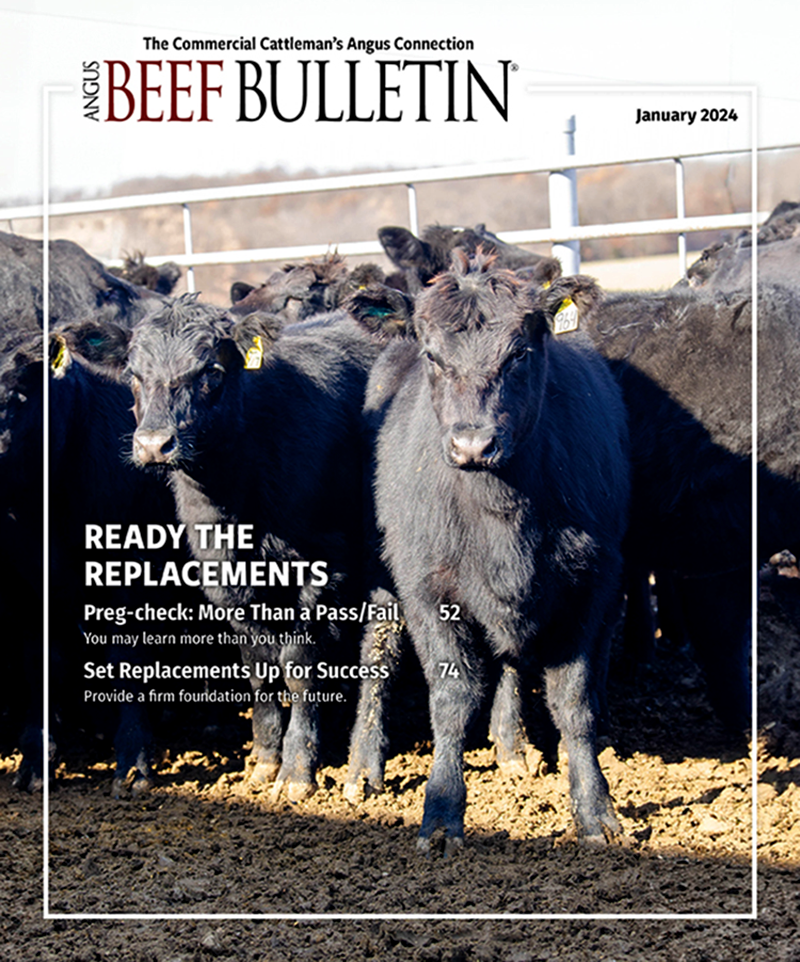
Living With Wolves
Colorado’s wolf reintroduction plan took effect in 2023. How can ranchers manage this threat?
Wolves, bears and mountain lions — predators with plenty of muscle and ambition to prey on cattle of all ages — aren’t going away. Unfortunately, this is a modern reality for livestock producers in the West. Depredation is happening and will continue to happen, so what options do livestock owners have when it comes to managing apex predators?
In November 2020, voters in Colorado approved Colorado Proposition 114, the Gray Wolf Reintroduction Initiative. Prop. 114 mandated wolves be introduced in the state by 2023. To be clear, migratory wolves have been crossing into Colorado from Wyoming for several years. These migratory wolves spring from wolves brought into Wyoming, Idaho and Montana in 1995.
During the 2023 Range Beef Cow Symposium, hosted in Loveland, Colo., a panel breakout session focused on Colorado’s wolf reintroduction efforts. Panelists offered tips for living with wolves.
Landowners are looking for four things when it comes to predators: compensation, conflict prevention, lethal control and collaboration, said Matt Collins of the Western Landowners Alliance (WLA), sharing what the organization has learned through its work throughout the West.
“On compensation, we were adamant that production losses, including reduced breed-up and reduced weight gains (associated with the presence of wolves), be part of the compensation program in Colorado,” said Collins.
Additionally, the WLA pushed for a compensation ratio that covers livestock that are missing and suspected as being depredation targets.
According to Ray Aberle, Colorado Parks and Wildlife private lands program manager, the current rule in Colorado is that livestock producers qualify for up to $15,000 in depredation compensation. This includes reproductive and/or production losses and the compensation ratio for missing animals. He offered a few tips for streamlining the process:
- Take pictures of the carcass as soon as it is discovered;
- Don’t disturb the carcass, the ground or nearby tracks;
- Notify appropriate officials as soon as possible;
- Keep accurate records on all livestock; and
- Have the appropriate paperwork ready.
The recordkeeping piece of this shouldn’t be intimidating to producers, said Frank Garry, Colorado State University professor.
“Most people have used some kind of recordkeeping system for 35 years or more,” Garry said. “The problem is that records are not kept in a way that is easy to access.”
Garry encouraged producers to reach out to Extension if they need help converting paper records into electronic records that can expeditiously compare year-over-year numbers so any losses will be clear.
While Colorado ranchers along with ranchers within many other states have the option to use lethal control (when permitted properly and under conditional circumstances), Lauren Emerick, USDA Animal and Plant Health Inspection Service (APHIS), recommended ranchers try nonlethal methods to prevent depredation in the first place.
Livestock guardian dogs, flaggery and fox lights are all options, she said, proven to be effective at preventing wolf kills on livestock.
“None of these are a one-size-fits-all [option], and none of them last for the long term,” she cautioned.
Former Colorado Cattlemen’s Association President Philip Anderson has lost livestock to wolf depredation. He said he supports lethal control, but questions its efficacy. He has used flaggery during calving season and found it to be somewhat successful. The downside is that it is short-lived in deterring wolves.
Anderson said that, in his experience, the most beneficial tool producers have in dealing with predators is people working together. He recommended building trust between neighbors and wildlife officials.
“We have reached a point where neighbors are calling each other [about wolves in the area], and Colorado Parks and Wildlife is calling us and warning us. That means a lot to us. That helped us cross that bridge of trust. Today, I feel we have the best trust and working relationship that we’ve ever had with that agency.”
Editor’s note: Paige Nelson is a field editor and cattlewoman from Rigby, Idaho.



